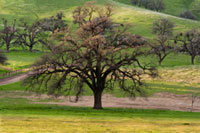Blog
Book Review: Your Stripped Bare Guide
Having earned a Ph.D., worked as a professor, and published research, I know that citing sources is essential in academic work. Having published in multiple disciplines, I have used different styles of citations and variations of those styles. Students can usually understand why direct quotations need to be cited, but do not always grasp why the facts they use in their writing must also be attributed. The methods in technical papers are explained so that they can be reproducible. For a technical discipline, citations can be used by...
read moreMore WWII Morning Reports in the NARA Catalog
It should not be a surprise that to anyone who has read my most recent book Finding and Using U.S. Army WWI and WWII Morning Reports: A Research Guide for Historians and Genealogists or seen my presentation about Morning Reports that I periodically check the NARA catalog. Specifically, I have been checking to see if reports later than July 1944 have been uploaded. Today I searched, and success! As a reminder, I search from the main catalog page at https://catalog.archives.gov/ so that I can benefit from the links to the search terms...
read moreAI: Meta Prompting
If you have attended one of my AI presentations, then you know how important it is to develop prompt engineering skills to get the most out of Large Language Models (LLMs). The good news is that we do not always have to create the perfect prompt on our own! There is a harsh term used in my field, GIGO, which stands for Garbage In, Garbage Out. When it comes to AIs, this applies to the fact that the LLM response (output) will only be as good as our prompts (input). A simple explanation of meta prompting is to have one...
read moreBook Review: Genealogy in Reverse
Have you ever wanted to look at the playbook that someone who specializes in finding living descendants has created? Have you wondered what resources a researcher would employ online and in the real world? Have you wanted to use such a playbook in your own reverse genealogy efforts? Within its 54 pages, Genealogy in Reverse: Finding the Living lets you have your own copy of concise notes written by Ms. Passey. She does this professionally and her impressive credentials include working as a subcontractor in the important genealogical work...
read moreNCGS Fall Conference 2025
Recently I had the pleasure of presenting at, and attending, the North Carolina Genealogical Society Fall Conference 2025. The Conference was very well planned and organized at a wonderful venue with great food. As much as I appreciate the reach of virtual presentations to give presentations at many places far from where I am based, it was nice to be with a group of genealogists, learning and chatting. At the Conference, I presented sessions about Military Research and Artificial Intelligence (AI). When speaking about military...
read moreRecent AI Developments
Have you been following the latest in AI? One thing I always guarantee during my presentations is that AI models will change! There have been changes to ChatGPT’s video generating model, Sora. As a result, I don’t see Sora anymore when I login to my Plus account on ChatGPT. Now I have to login separately to use Sora. Part of the change is that Sora 2 is now available! Pro users can use it now, but as a Plus user, it may be a while before I get a chance. You can read about the new video model at:...
read moreNCGS 2025 Fall Conference
Will I see you there? I am excited to be invited to present in person and online! On Friday, I will be presenting Ancestors, AI, and Prompt Engineering. On Saturday, I will be presenting a Crash Course in Researching Ancestors in the US Military. There are great speakers, and great talks, Friday and Saturday. There is also an optional Beginner Day on Thursday, featuring four lectures just for...
read moreResearching Morning Reports
Have you every heard that you should be using Morning Reports? A book has finally arrived to show how you can travel back in time through locations and events, day by day, with a U.S. Army soldier or organization during WWI or WWII military service. With Morning Reports, you can overcome and potentially go beyond burned Army personnel files! Pursue references for a specific soldier, then leverage daily records when not named or identified. This book introduces techniques for locating Morning Reports and what is and is not...
read moreRev. Fr. Kennedy and AI
It has been a while since there has been a blog post. In that time, I have been working on my newest presentation, Mining Morning Reports for Genealogical Gold. You can read a review here: https://aweekofgenealogy.com/comments In addition to getting ready for other presentations, I have also been experimenting with the NARA Catalog API to get an alternate way of searching the catalog. I did spend some time with AI offerings in my research into the Rev. Fr. Thomas J. Kennedy. First, I uploaded the sketch that I have of him from...
read moreUS Navy Log Book for Pearl Harbor 1941
If you have read our WWI military research book, Researching U.S. WWI Military Members, Military Organizations and Overseas Noncombatants: A Research Guide for Historians and Genealogists (Research Guides for Historians and Genealogists), you know that the Navy uses Log Books. The Log Book for the U.S. Naval Navy Yard at Pearl Harbor that includes 7 Dec 1941 has been located! Apparently it was found in a dumpster in California, then held by a family for many years. A digital copy of the Log book can be found at:...
read more


